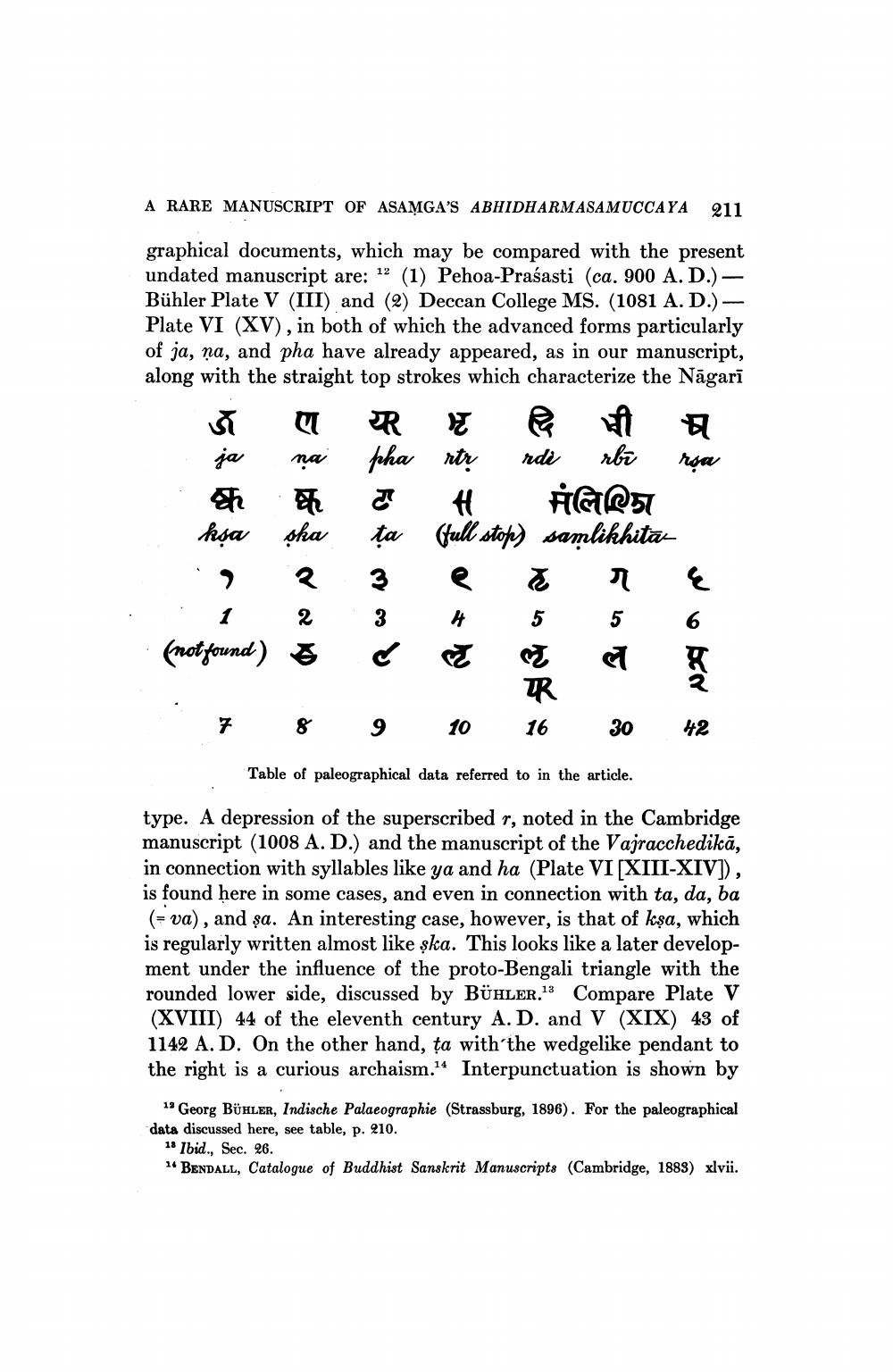Book Title: Rare Mmanuscript Of Asamgas Abhidharma Samuccaya Author(s): V V Gokhale Publisher: V V Gokhale View full book textPage 5
________________ A RARE MANUSCRIPT OF ASAMGA'S ABHIDHARMASAMUCCAYA 211 graphical documents, which may be compared with the present undated manuscript are: 12 (1) Pehoa-Prasasti (ca. 900 A.D.) - Bühler Plate V (III) and (2) Deccan College MS. (1081 A. D.) - Plate VI (XV), in both of which the advanced forms particularly of ja, ņa, and pha have already appeared, as in our manuscript, along with the straight top strokes which characterize the Nāgarī ७ प ja na क छ kņa ska .. २ 1 2 (notround) 3 7 8 यह pha र ta ३ 3 ८ ट द भी घ rtr rdi rbr roa म मलिलिका (tull stop) samlikhita ९ ट ग १ 4 5 5 6 ल ल ल पू TR 10 16 30 42 w w w obory R 9 Table of paleographical data referred to in the article. type. A depression of the superscribed r, noted in the Cambridge manuscript (1008 A.D.) and the manuscript of the Vajracchedikā. in connection with syllables like ya and ha (Plate VI (XIII-XIV]), is found here in some cases, and even in connection with ta, da, ba (= va), and șa. An interesting case, however, is that of kşa, which is regularly written almost like şka. This looks like a later development under the influence of the proto-Bengali triangle with the rounded lower side, discussed by BÜHLER.13 Compare Plate V (XVIII) 44 of the eleventh century A.D. and V (XIX) 43 of 1142 A. D. On the other hand, ța with the wedgelike pendant to the right is a curious archaism.14 Interpunctuation is shown by 1Georg BÜHLER, Indische Palaeographie (Strassburg, 1896). For the paleographical data discussed here, see table, p. 210. 18 Ibid., Sec. 26. 14 BENDALL, Catalogue of Buddhist Sanskrit Manuscripts (Cambridge, 1883) xlvii.Page Navigation
1 ... 3 4 5 6 7
